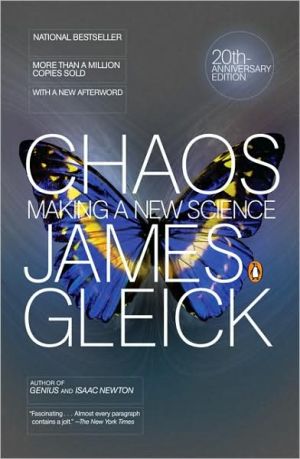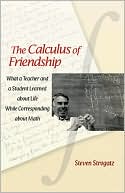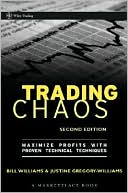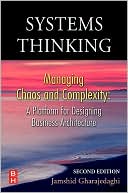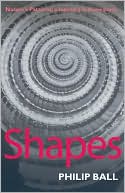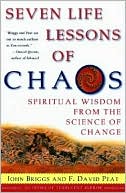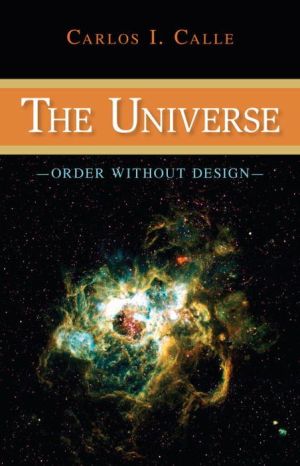Chaos: Making a New Science
The million-copy bestseller by National Book Award nominee and Pulitzer Prize finalist James Gleick that reveals the science behind chaos theory\ National bestseller\ More than a million copies sold\ A work of popular science in the tradition of Stephen Hawking and Carl Sagan, this 20th-anniversary edition of James Gleick’s groundbreaking bestseller Chaos introduces a whole new readership to chaos theory, one of the most significant waves of scientific knowledge in our time. From Edward...
Search in google:
The twentieth-anniversary edition of the million-copy-plus BestsellerTHIS EDITION of James Gleick's groundbreaking bestseller introduces to a whole new readership the story of one of the most significant waves of scientific knowledge in our time. By focusing on the key figures whose genius converged to chart an innovative direction for science, Gleick makes the story of chaos theory not only fascinating but also accessible, and opens our eyes to a surprising new view of the universe. Publishers Weekly Science readers who have gone through relativity theory, quantum physics, Heisenbergian uncertainty, black holes and the world of quarks and virtual particles only to be stunned by recent Grand Unified Theories (GUTS) will welcome New York Times science writer Gleick's adventurous attempt to describe the revolutionary science of chaos. ``Chaos'' is what a handful of theorists steeped in math and computer know-how are calling their challengingly abstract new look at nature in terms of nonlinear dynamics. Gleick traces the ideas of these little-known pioneersincluding Mitchell Feigenbaum and his Butterfly Effect; Benoit Mandelbrot, whose ``fractal'' concept led to a new geometry of nature; and Joseph Ford who countered Einstein with ``God plays dice with the universe. But they're loaded dice.'' Chaos is deep, even frightening in its holistic embrace of nature as paradoxically complex, wildly disorderly, random and yet stable in its infinite stream of ``self-similarities.'' A ground-breaking book about what seems to be the future of physics. Illustrations. QPBC alternate. (October 20)
Prologue1The Butterfly Effect9Edward Lorenz and his toy weatherThe computer misbehavesLong-range forecasting is doomedOrder masquerading as randomnessA world of nonlinearity"We completely missed the point"Revolution33A revolution in seeingPendulum clocks, space balls, and playground swingsThe invention of the horseshoeA mystery solved: Jupiter's Great Red SpotLife's Ups and Downs57Modeling wildlife populationsNonlinear science, "the study of non-elephant animals"Pitchfork bifurcations and a ride on the SpreeA movie of chaos and a messianic appealA Geometry of Nature81A discovery about cotton pricesA refugee from BourbakiTransmission errors and jagged shoresNew dimensionsThe monsters of fractal geometryQuakes in the schizosphereFrom clouds to blood vesselsThe trash cans of science"To see the world in a grain of sand"Strange Attractors119A problem for GodTransitions in the laboratoryRotating cylinders and a turning pointDavid Ruelle's idea for turbulenceLoops in phase spaceMille-feuilles and sausageAn astronomer's mapping"Fireworks or galaxies"Universality155A new start at Los AlamosThe renormalization groupDecoding colorThe rise of numerical experimentationMitchell Feigenbaum's break-throughA universal theoryThe rejection lettersMeeting in ComoClouds and paintingsThe Experimenter189Helium in a Small Box"Insolid billowing of the solid"Flow and form in natureAlbert Libchaber's delicate triumphExperiment joins theoryFrom one dimension to manyImages of Chaos213The complex planeSurprise in Newton's methodThe Mandelbrot set: sprouts and tendrilsArt and commerce meet scienceFractal basin boundariesThe chaos gameThe Dynamical Systems Collective241Santa Cruz and the sixtiesThe analog computerWas this science?"A long-range vision"Measuring unpredictabilityInformation theoryFrom microscale to macroscaleThe dripping faucetAudiovisual aidsAn era endsInner Rhythms273A misunderstanding about modelsThe complex bodyThe dynamical heartResetting the biological clockFatal arrhythmiaChick embryos and abnormal beatsChaos as healthChaos and Beyond301New beliefs, new definitionsThe Second Law, the snowflake puzzle, and loaded diceOpportunity and necessityNotes on Sources and Further Reading318Acknowledgments341Index343
\ Publishers Weekly - Publisher's Weekly\ Science readers who have gone through relativity theory, quantum physics, Heisenbergian uncertainty, black holes and the world of quarks and virtual particles only to be stunned by recent Grand Unified Theories (GUTS) will welcome New York Times science writer Gleick's adventurous attempt to describe the revolutionary science of chaos. ``Chaos'' is what a handful of theorists steeped in math and computer know-how are calling their challengingly abstract new look at nature in terms of nonlinear dynamics. Gleick traces the ideas of these little-known pioneersincluding Mitchell Feigenbaum and his Butterfly Effect; Benoit Mandelbrot, whose ``fractal'' concept led to a new geometry of nature; and Joseph Ford who countered Einstein with ``God plays dice with the universe. But they're loaded dice.'' Chaos is deep, even frightening in its holistic embrace of nature as paradoxically complex, wildly disorderly, random and yet stable in its infinite stream of ``self-similarities.'' A ground-breaking book about what seems to be the future of physics. Illustrations. QPBC alternate. (October 20)\ \ \ \ \ Chicago TribuneHighly entertaining . . . a startling look at newly discovered universal laws.\ \ \ The New York TimesFascinating . . . almost every paragraph contains a jolt.\ \ \ \ \ The New York Times Book ReviewTaut and exciting . . . a fascinating illustration of how the pattern of science changes.\ \ \ \ \ Library JournalChaos-theory, touted as the third revolution in 20th-century science after relativity and quantum mechanics, uses traditional mathematics to understand complex natural systems with too many variables to study. Philosophically, it counters the Second Law of Thermodynamics by demonstrating the ``spontaneous emergence of self-organization.'' In this new science apparent disorder is meaningful; the structure of chaos can be mapped by plotting graphically the calculations of nonlinear mathematics using ``fractal'' geometry, a brainchild of Benoit Mandelbrot in which symmetrical patterns repeat across different scales. With jocular descriptions of eccentric characters such as the ``Dynamical Systems collective,'' (a.k.a. Chaos Cabal) of the University of CaliforniaSanta Cruz, Chaos offers an absorbing look at trailblazers on a new scientific frontier. Laurie Tynan, Montgomery Cty.-Norristown P.L., Pa.\ \ \ \ \ BooknewsReissue of the 1987 Viking ed. Annotation c. Book News, Inc., Portland, OR (booknews.com)\ \
